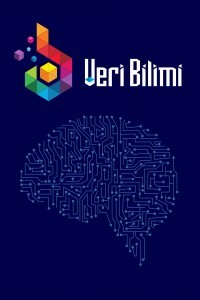Helmholtz-Based Automatic Document Summarization
Automatic Document Summarization, Helmholtz Principle, KL Divergence, Latent Semantic Analysis, LexRank, Summarization Algorithms, TextRank, TF-IDF
Helmholtz-Based Automatic Document Summarization
Automatic Document Summarization, Helmholtz Principle, KL Divergence, Latent Semantic Analysis, LexRank, Summarization Algorithms, TextRank, TF-IDF,
___
- Lee, J. H., Park, S., Ahn, C. M., & Kim, D. (2009). Automatic generic document summarization based on non-negative matrix factorization. Information Processing & Management, 45(1), 20-34.
- Torres-Moreno, J. M. (2014). Automatic text summarization. John Wiley & Sons.
- Joshi A., Fidalgo E., Alegre E., Fernández-Robles L. 2019. SummCoder: An Unsupervised Framework for Extractive Text Summarization Based on Deep Auto-encoders. Expert Syst Appl., doi: 10.1016/j.eswa.2019.03.045.
- Cigir C., Kutlu M., Cicekli I. 2009. Generic text summarization for Turkish. 2009 24th International Symposium on Computer and Information Sciences (IEEE), pp: 224-229.
- Luhn, H. P. (1958). The automatic creation of literature abstracts. IBM Journal of research and development, 2(2), 159-165.
- A. R. Pal, D. Saha, “An approach to automatic text summarization using WordNet,” 2014 IEEE International Advance Computing Conference (IACC), India, pp. 1169-1173, 2014.
- D. Gunawan, S.H. Harahap, R.F. Rahmat, “Multi-document Summarization by using TextRank and Maximal Marginal Relevance for Text in Bahasa Indonesia,” 2019 International Conference on ICT for Smart Society (ICISS), Indonesia, pp. 1-5, 2019.
- Al-Sabahi, Kamal & Zuping, Zhang & Nadher, Mohammed. (2018). A Hierarchical Structured Self-Attentive Model for Extractive Document Summarization (HSSAS). IEEE Access. PP. 1-1. 10.1109/ACCESS.2018.2829199.
- A. Vartakavi, A. Garg and Z. Rafii, "Audio Summarization for Podcasts," 2021 29th European Signal Processing Conference (EUSIPCO), 2021, pp. 431-435, doi: 10.23919/EUSIPCO54536.2021.9615948.
- https://www.kaggle.com/pariza/bbc-news-summary
- B. Dadachev, A. Balinsky, H. Balinsky and S. Simske, “On the Helmholtz Principle for Data Mining,” Third International Conference on Emerging Security Technologies (EST), Lisbon, Portekiz, 2012.
- B. Dadachev, A. Balinsky, H. Balinsky and S. Simske, “On Helmholtz’s Principle for Documents Processing,” Proceedings of the 10th ACM Symposium on Document Engineering, Manchester, England, ss. 283-286, 2010.
- A. Toprak and M. Turan, "English Automatic Dictionary Creation with Natural Language Processing," 2019 Innovations in Intelligent Systems and Applications Conference (ASYU), 2019, pp. 1-6, doi: 10.1109/ASYU48272.2019.8946431.
- Khoury, Raphaël & Shi, Lei & Hamou-Lhadj, Abdelwahab. (2016). Key Elements Extraction and Traces Comprehension Using Gestalt Theory and the Helmholtz Principle. 478-482. 10.1109/ICSME.2016.24.
- Sarkar K., Saraf K., Ghosh A. 2015. Improving graph based multidocument text summarization using an enhanced sentence similarity measure. 2015 IEEE 2nd International Conference on Recent Trends in Information Systems, ReTIS 2015 - Proceedings, pp: 359-365.
- J.-M. M. Agnes Desolneux, Lionel Moisan Jean-Michel, From GestaltTheory to Image Analysis, 2006, vol. 34, no. July.
- A. Toprak and M. Turan, "The Positive Effect of PMI on the Selection of Meaningful Words," 2019 11th International Conference on Electrical and Electronics Engineering (ELECO), 2019, pp. 911-915, doi: 10.23919/ELECO47770.2019.8990666.
- Başlangıç: 2018
- Yayıncı: Murat GÖK
Yapay Sinir Ağları Kullanılarak Yere Nüfuz Eden Radar Verilerinden Mayın Tespiti
Helmholtz-Based Automatic Document Summarization
LPWAN Teknolojileri ve Uygulama Alanlarının Karşılaştırmalı İncelemesi
Elvan DUMAN, Münüre ALTINTAŞ, İclal GÜL, Muhsin DOLU
Yerel Sunucularda RXTE, XMM-Newton ve SWIFT Verisine Erişim ve Veri Yönetimi Programı
